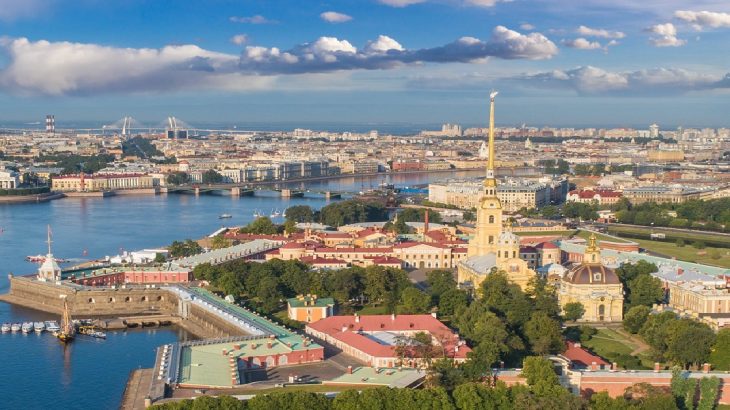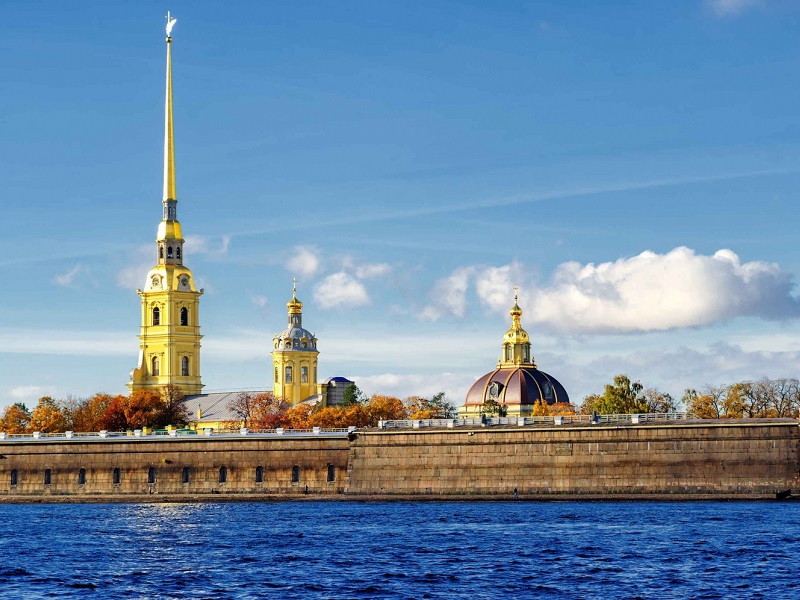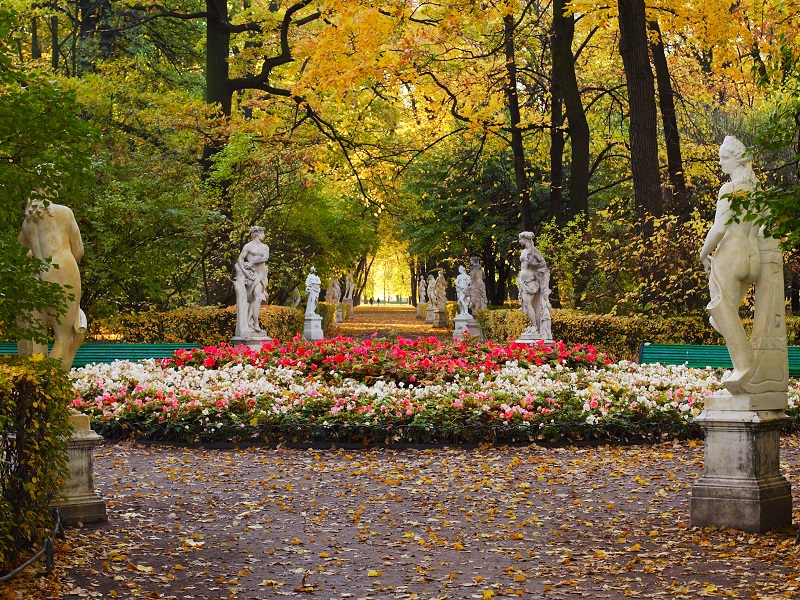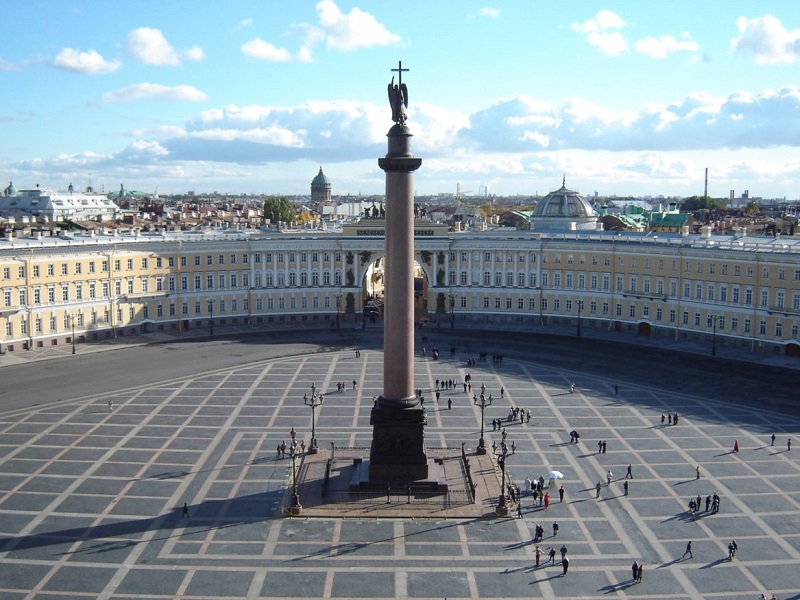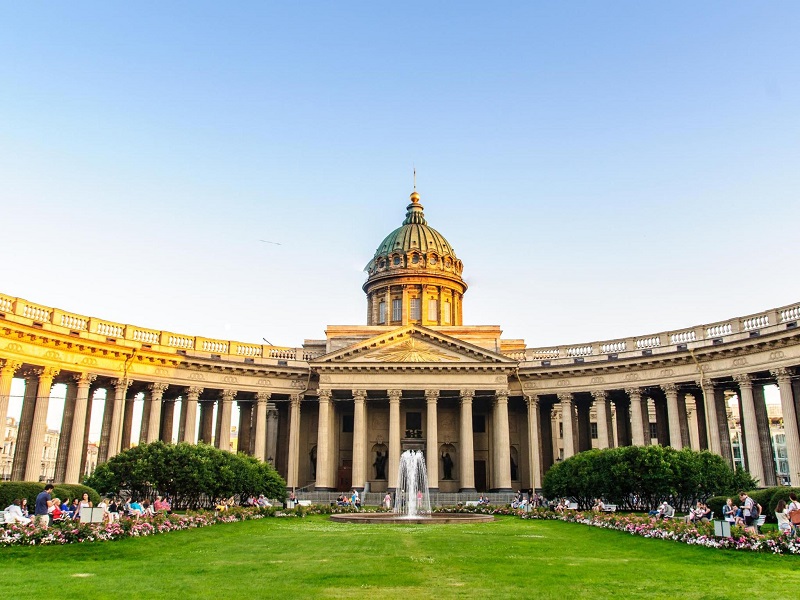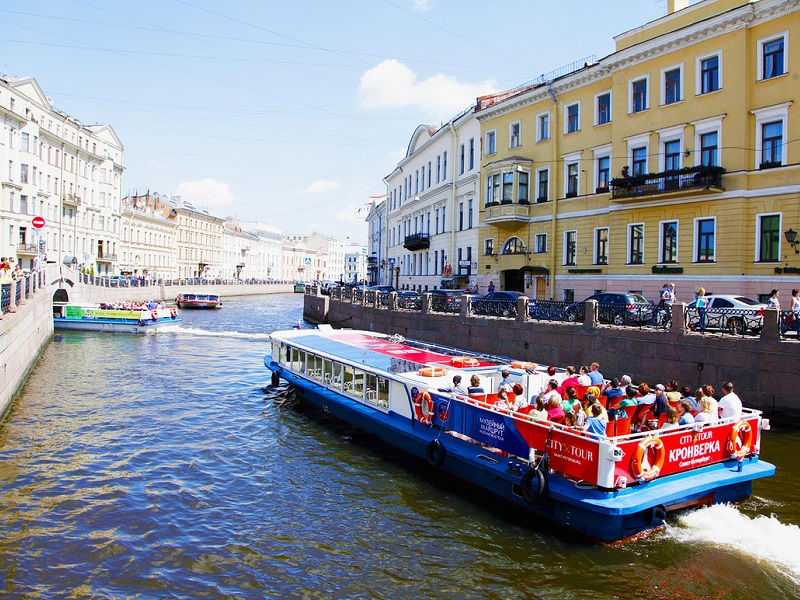Located on the Neva River at the head of the Gulf of Finland on the Baltic Sea, Saint Petersburg is the second largest city in Russia and among the top cultural destinations in Europe. Often considered Russia’s cultural capital, it boasts magnificent structures that stand as the symbol of the city’s glorious past. UNESCO declared the entire city center a World Heritage Site, featuring hundreds of prominent museums, cathedrals, sculptures, squares, and places of interest to explore. Home to the Hermitage, one of the largest and most stunning art museums in the world, surrounded by canals, and home to beautiful white nights (when the sun never sets in summer), the city of St. Petersburg is regal and inspiring. Besides, St. Petersburg has been home to many great Russian poets, writers, artists, and scientists. So, if you are planning to visit St Petersburg, take a look at our list of top tourist places to visit in St. Petersburg as part of Europe tour packages.
The State Hermitage Museum
Hermitage Museum is an art museum located in the beautiful Winter Palace, the former royal residence for the rulers of Russia. Built in the Russian Baroque style, the palace is in the square shape with a courtyard on the center and has nearly 1500 rooms. The museum was founded by the Russian Empress Catherine the Great, a true art patron, and visiting this art paradise is definitely a treat for any art enthusiast. With over three million objects, it is the second-largest museum in the world and among the best museums to visit in Europe. Composed of six buildings, the museum offers a variety of exhibits ranging from ancient history to contemporary art. The museum is home to some famous Renaissance paintings and one of the best collections of Dutch Golden Ages’ pieces. Apart from the museum, one can visit a mansion known as Menshikov Palace, a museum of porcelain, a storage facility at Staraya Derevnya, and an eastern wing of the General Staff Building in the collection while in Saint Petersburg.
St. Isaac’s Cathedral
St. Isaac’s Cathedral is the largest orthodox basilica in Russia, and among the must-visit St. Petersburg tourist places. Completed in 1858, the cathedral was named after Saint Isaac the Confessor, a Christian monk who founded an important monastery in Constantinople. Built-in Neoclassical and Byzantine architectural style, the facade of the cathedral is adorned with intricate work, and massive granite columns. There is a gold dome at the top, which is encircled by 12 statues of angels, which were made by a technology called electrotyping. The interiors of the cathedral are elaborately decorated with mosaics, along with a huge stained-glass window of the ‘Resurrected Christ’. The Cathedral was turned into a museum in 1931 but it again resumed as the Russian Orthodox Church in 2017. Today, it serves as both a cathedral and a museum. The museum is home to many ancient icon paintings, mosaic images, and colored stonework and marble. Don’t forget to climb up the 43-meter-tall colonnade from where you can get a panoramic view of the city.
State Russian Museum
The State Russian Museum is one of the most important and iconic museums located in St. Petersburg, among the top places to visit in Russia. Originally named as Alexandrovskiy museum, the museum was established in 1895 by Nicholas II in remembrance of his father, Tsar Alexander III, and was opened to the public in 1898. The museum was built to give competition to the great Tretyakov Gallery of art in Moscow. Occupying the magnificent Mikhailovsky Palace, it displays one of the finest collections of Russian artwork, dating back to the 11th century with highlights including medieval icons, atmospheric late-19th century genre paintings, and several modernist masterpieces. The museum doesn’t have different rooms dedicated to different periods, and all the artwork from over the centuries is displayed collectively.
Peterhof Palace
A UNESCO World Heritage Site, Peterhof is a series of palaces and gardens located in the Peterhof region of St. Petersburg. Often called the Russian Versailles, it is one of the most prominent places to visit in St. Petersburg with countless attractions within it. Established in the 18th century, it was initially designed by King Peterhof as a rival monument to the French Palace of Versailles. Today, it is a large complex consisting of the Grand Palace (Bolshoi Dvorets), the Grand Cascade, the Upper Gardens, and the Lower Gardens. The Grand Palace features 30 rooms that are decorated with truly imposing gold colors, lots of marble, and items brought back from Asia mixing in with Baroque-style fireplaces and giant mirrors. The main highlight of the Peterhof is its ‘Grand Cascade’ that consists of 64 fountains located on a series of terraces outside the main entrance of the palace. The Samson Fountain is the most popular of these, which shows Samson tearing open the mouth of a lion, and a 20 metre high fountain shoots out of it’s mouth, which is symbolic of Russia’s victory over Sweden in the Great North War.
Peter & Paul Fortress
The Peter and Paul Fortress was originally a fortress from where the city of St. Petersburg began. Initially, the citadel was established by Peter the Great, and later upgraded into a star fortress by Dominic Trezzini. The fortress never actually saw any military action but has fulfilled a variety of functions over its three-century history, from burial place for nearly all of the Romanov Emperors and Empresses to notorious political prison and execution quarters during the Bolshevik revolution in the early 20th century. Today, it is part of the State Museum of the History of St. Petersburg. Within the walls of the fortress and surrounded by beautiful gardens and stone paths, there are several buildings including the 18th-century Peter and Paul Cathedral, Prison Museum, and the Saint Petersburg Mint building.
Church of the Savior on Spilled Blood
Located by the Griboyedov Canal, The Church of the Savior on Spilled Blood is a Russian Orthodox church and among the must-include places in St. Petersburg tour packages. Also known as the Church of Resurrection, the church stands on the very spot where Alexander II was assassinated. Funded solely by the imperial family and private donors, the church was built in classical Russian architecture, and is one of the most stunning structures in all of St. Petersburg. The interior and the exterior of the church are so emphatically detailed with mosaics that are one of the largest collections of mosaics in the world. The church was significantly damaged during the Russian Revolution in 1917, then used as a morgue during WWII and as a potato warehouse right after. It took almost 30 years of restoration to get the building to its original splendor. Today, it serves as a museum of mosaics.
Nevsky Avenue
Named after the 13th-century Russian prince Alexander Nevsky, Nevsky Prospekt or Nevsky Avenue is the prime commercial center in St. Petersburg. With 4.5 km long, it serves as the city center from east to west lined up with several high-end shops, palaces, churches, fancy restaurants, and luxury hotels. This lively street also houses St. Petersburg’s most famous attractions and landmarks including the Kazan Cathedral, the Russian National Library, Rastrelliesque Stroganov Palace, the Art Nouveau Book house, a couple of 18th-century churches, Catherine the Great monument, a huge18th-century shopping mall, the Singer House, and the Anichkov Bridge. Thronged by a large number of people, it is one of the best places for shopaholics in St. Petersburg. Even if you don’t plan on doing any shopping here, the lights and atmosphere of this avenue are still worth a visit.
Summer Garden
Set against the backdrop of the stunning Neva River, the Summer Garden is a public garden located at the intersection of the Fontanka and the Neva rivers in St. Petersburg. Designed in 1704 by Peter the Great, it is one of the most scenic and oldest gardens of St. Petersburg and indeed Russia. If you are looking for a peaceful abode, then visit this place as it houses a total of 79 marble sculptures, dating back to the 17th and 18th century, several fountains, ponds, and the entire park is spectacularly arranged with lush green trees, lawns and flowerbeds. During summer evening, the park becomes lovely where you can enjoy the performances of street artists all over along with eating local snacks and ice creams. Also, it is a great place to spend some quality time with your family and friends due to its serene environment.
Palace Square
Palace Square is the largest public square located in front of the Winter Palace in St. Petersburg. The 47 m tall Alexander Column stands at the center of the square. The column, built of a single piece of red granite, was commissioned by Alexander I in 1830 to commemorate Russia’s victory against Napoleon. Designed by Italian architect Francesco Bartolomeo Rastrelli, Palace Square is one of the best places to visit in St. Petersburg. Tsar Alexander II was shot here in 1879, and Bolshevik troops started the Revolution here in 1917 by storming the Winter Palace. Since then, the square has also been used for marches and demonstrations, from military parades to celebrate Victory Day (which marks the end of WWII) to New Year’s Eve celebrations.
Kazan Cathedral
Situated in Kazan Square on the Nevsky Prospekt, the Kazan Cathedral is an imposing Russian Orthodox Church in St. Petersburg. Also known as Cathedral of Our Lady of Kazan, it serves as the symbol of victory of Russians over French army of Napoleon after the war in 1912. Built in Empire architectural style at the beginning of 19th century, the structure with its 96 columns in the shape of a crescent – a design inspired by the Vatican’s Saint Peter Basilica in Rome is a beautiful sight to behold. The richly decorated sculptures, granite columns relief works made by renowned Russian artists make it one of the most revered places to visit in St. Petersburg. It is also the resting place of Russian Field Marshall Mikhail Kuzotov, who commanded the most important campaign victory over the French.
The Rivers & Canals of St. Petersburg by Boat
If you’re visiting St. Petersburg from May to October, then the best way to explore the city is by boat. There is a wide range of different offers available at the various quays on or near Nevsky Prospekt, with larger boats offering guided tours and onboard refreshments, and smaller boats that you can rent by the hour, choose your own route. All routes through the center take in some portion of the Fontanka and Moyka Rivers and the Griboedov and Kryukov Canals. Some also head out onto the River Neva, while around midnight most of the boats in the city offer the chance to watch the opening of Neva’s bascule bridges from the water. Its embankments are the foundation of many attractions, and boat rides on the river offer some spectacular views. Whatever route you end up taking, a boat trip is a fantastic way to see St. Petersburg from a different angle, and perhaps the best possible means of getting an impression of the sheer scope of the city’s architectural beauty and romance.
Mariinsky Theatre
The Mariinsky Theatre is one of the Russia’s most historic opera and ballet theatre located in St. Petersburg. Opened in 1860, this theatre premiered several works of notable artists such as Tchaikovsky, Mussorgsky, and Rimsky-Korsakov. Today, it is one of the most prestigious cultural institutions in St. Petersburg. Known for its opera all over the world, the most famous operas that it showcases is Stars of the White Nights festival held every summer in St. Petersburg. If you are a fan of ballet and want to see Russian ballet performances, then don’t miss this place during your Russia Tour.
